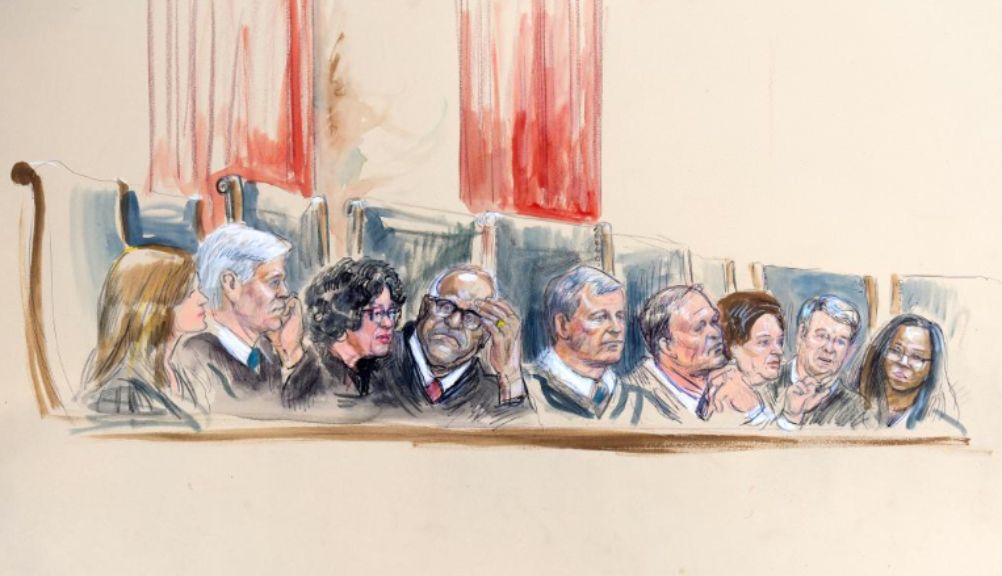The nine justices of the U.S. Supreme Court are engaged in a heated debate over a case that could redefine the boundaries of presidential power, with a ruling that will affect the flow of over 100 billions of dollars and the structure of global trade. On November 5 local time, the U.S. Supreme Court held a two-and-a-half-hour debate on the legality of former President Trump’s sweeping tariffs, with a tense atmosphere in the courtroom.
Several conservative and liberal justices questioned Trump’s use of the International Emergency Economic Powers Act of 1977 (IEEPA) to implement comprehensive tariffs. The core of the case lies in defining the limits of the U.S. president’s authority over trade policy. The ruling will not only determine the fate of over 140 billions of dollars in potential tariff refunds, but could also upend the entire strategic framework of the Trump administration’s trade policy.

I. Courtroom Scene: Voices of Doubt Arise
● During the November 5 hearing, several Supreme Court justices sharply questioned the legality of the Trump administration’s comprehensive tariff policy. The two-and-a-half-hour oral argument highlighted the importance of this case in defining the president’s authority over U.S. trade policy.
● Chief Justice John Roberts directly addressed the nature of the tariffs, arguing that these tariffs are essentially “a tax on the American people,” and that the power to tax has always been a core power of Congress. His position suggests that the Trump administration may have overstepped its authority by exercising powers that belong to the legislative branch.
● Justice Neil Gorsuch expressed concern about the government’s logic, even questioning whether, under this interpretation, Congress could delegate the power over foreign trade or even the power to declare war to the president.
Amy Coney Barrett, a justice appointed by Trump himself, posed pointed questions to both sides.
II. Legal Dispute: The Boundaries of Presidential Power
● The focus of the dispute is the Trump administration’s “reciprocal tariff” policy announced in April 2025, which imposed a 10% “minimum benchmark tariff” on all trading partners and higher rates on certain countries.
● The Trump administration cited the International Emergency Economic Powers Act of 1977 (IEEPA) as its legal basis, which grants the president the power to “regulate imports” in the face of “unusual and extraordinary threats.”
However, before Trump, no U.S. president had ever used this law to impose tariffs. U.S. companies affected by the tariff policy and 12 states filed lawsuits challenging its legality. Multiple courts had previously ruled that the Trump administration’s use of this law to implement comprehensive tariffs was illegal.
III. Potential Impact: Massive Refunds and Policy Restructuring
If the Supreme Court rules that the Trump administration overstepped its authority, it will trigger a series of major chain reactions.
● The most direct impact would be that the federal government could face over 100 billions of dollars in tariff refunds. UBS estimates the refund amount could be between 130 and 140 billions of dollars, equivalent to 7.9% of the projected 2025 budget deficit.
● For Trump’s trade strategy, a loss would mean a major blow to his approach of using high tariffs as leverage to force other countries into trade agreements. Without IEEPA as a flexible tool, the government would find it difficult to quickly implement tariff measures.
● Even so, experts believe that even if they lose, the Trump administration will not simply allow tariff barriers to collapse. The government may turn to other legal tools, such as Section 232 of the Trade Expansion Act of 1962, to rebuild tariffs, but these tools usually involve longer investigation processes and less flexibility.
IV. Impact on the Crypto Market and the Macroeconomy
The U.S. unilateral tariff policy has already had a negative impact on global economic growth expectations.
● The Bank for International Settlements pointed out in its 2025 Annual Economic Report that the comprehensive tariff war launched by the U.S. government in April this year “completely upended expectations for a soft landing of the world economy,” causing cracks in long-established trade relationships and turbulence in financial markets.
● The report reviewed various signs of a global economic soft landing at the beginning of 2025, but “the sudden tariff war abruptly darkened the global economic outlook.” The tariff war also led companies to delay investments and reduce hiring, while households increased precautionary savings, all of which have seriously impacted global economic growth.
Meanwhile, the cryptocurrency market is highly sensitive to changes in trade policy.
● Analysts point out that stricter trade policies or increased tariffs could heighten global economic uncertainty, which has historically driven increased volatility in the cryptocurrency market, as traders tend to shift to decentralized assets such as bitcoin and stablecoins.
● As China announced a suspension of its 24% tariff, bitcoin prices rebounded to the $101,000 mark, indicating that easing trade tensions can increase investor interest in risk assets, including cryptocurrencies.
V. Other Tariff Measures and Future Trends
It is worth noting that even if the Supreme Court rules against Trump, it will not directly affect tariff measures implemented under other laws.
● For example, under Section 232 of the Trade Expansion Act of 1962, the Trump administration has imposed a 25% tariff on imported cars and parts, and levied tariffs on imported timber and derivative products. In February 2025, Trump also signed a new executive order to strengthen tariffs on steel and aluminum products. These measures are based on different legal authorizations and may therefore not be directly affected by the outcome of this case.
● Jeffrey Sachs, a professor at Columbia University and former senior advisor to the United Nations, pointed out that over the past decade, U.S. measures such as tariffs, technology restrictions, and export controls aimed at containing China have not achieved their intended goals, but have instead produced a “boomerang effect”, leaving the U.S. economy isolated.





